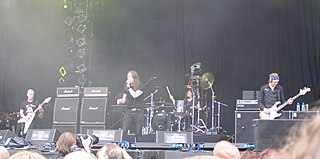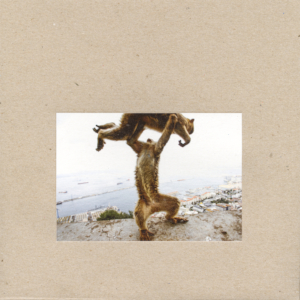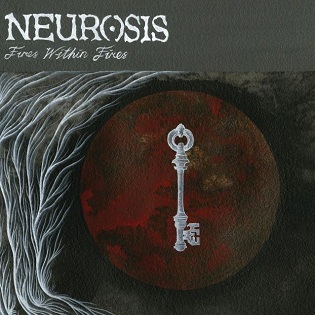
Shellac was an American noise rock band from Chicago, Illinois, composed of Steve Albini, Bob Weston and Todd Trainer and formed in 1992. Albini died in May 2024.

At Action Park is the debut studio album by American rock band Shellac, released in 1994.

The Jesus Lizard is an American rock band formed in 1987 in Austin, Texas by vocalist David Yow, guitarist Duane Denison and bassist David Wm. Sims. They relocated to Chicago, Illinois, in 1989, where they found kindred spirits in recording engineer Steve Albini and Touch and Go Records. With the addition of drummer Mac McNeilly, they began performing live, eventually attracting an international audience with their powerful live show.

Neurosis is an American post-metal band from Oakland, California. It was formed in 1985 by guitarist Scott Kelly, bassist Dave Edwardson, and drummer Jason Roeder, initially as a hardcore punk band. Chad Salter joined as a second guitarist and appeared on the band's 1987 debut Pain of Mind and then Steve Von Till replaced him in 1989. The following year, the lineup further expanded to include a keyboardist and a visual artist. Beginning with their third album Souls at Zero (1992), Neurosis transformed their hardcore sound by incorporating diverse influences including doom metal and industrial music, becoming a major force in the emergence of the post-metal and sludge metal genres.

Cathedral were a doom metal band from Coventry, England. The group gained attention upon release of its debut album, Forest of Equilibrium (1991), which is considered a classic of the genre. However, the band's sound evolved quickly and began to adopt characteristics of 1970s metal, hard rock and progressive rock. After releasing ten full-length albums and touring extensively for over two decades, Cathedral broke up after the release of The Last Spire in 2013.

Immolation is an American death metal band from Yonkers, New York. They are considered one of the leaders of the New York death metal scene along with Incantation, Mortician and Suffocation.

Isis was an American post-metal band formed in Boston, Massachusetts in 1997 by guitarist and vocalist Aaron Turner, bassist Jeff Caxide, vocalist and electronic instrumentalist Chris Mereschuk and drummer Aaron Harris. After a demo and the EP Mosquito Control were recorded by the original lineup, Mereschuk was replaced by Jay Randall in 1999, who joined the group alongside guitarist Michael Gallagher. Jay Randall would later be replaced by guitarist and keyboardist Bryant Clifford Meyer after the recording of Red Sea. With roots in hardcore punk and doom metal, the band borrowed from and helped to evolve the post-metal sound pioneered by bands such as Neurosis and Godflesh, characterized by lengthy songs focusing on repetition and evolution of structure. Isis disbanded in June 2010, just before the release of a split EP with the Melvins, reforming only once in 2018 as Celestial for a one-off show to pay tribute to Caleb Scofield.

Steven Frank Albini was an American musician and audio engineer who was a member of the influential post-hardcore and noise rock bands Big Black (1981–1987), Rapeman (1987–1989) and Shellac (1992–2024). He was the founder, owner, and principal engineer of the Chicago recording studio Electrical Audio. He recorded thousands of records, collaborating with acts including Nirvana, Pixies, the Breeders, PJ Harvey, the Jesus Lizard and Page and Plant.
Post-metal is a music genre rooted in heavy metal but exploring approaches beyond metal conventions while being related to and similar to post-rock. It emerged in the 1990s with bands such as Neurosis and Godflesh, who transformed metal texture through experimental composition. In a way similar to the predecessor genres post-rock and post-hardcore, post-metal offsets the darkness and intensity of extreme metal with an emphasis on atmosphere, emotion, and even "revelation", developing an expansive but introspective sound variously imbued with elements of ambient, noise, psychedelic, progressive, and classical music, and often shoegaze and art rock. Songs are typically long, with loose and layered structures that discard the verse–chorus form in favor of crescendos and repeating themes. The sound centres on guitars and drums, while any vocals are often but not always screamed or growled and resemble an additional instrument.

Souls at Zero is the third studio album by the American post-metal band Neurosis. It was released in 1992 by the Alternative Tentacles record label. It was reissued in 1999 with bonus tracks on the band's own Neurot Recordings label. On February 15, 2010, the album was reissued on CD and digitally with new artwork by Neurot. Souls at Zero marked a shift in the band's style, moving away from the fast-paced hardcore punk influences of their early work towards slower tempos and greater experimentation.

Enemy of the Sun is the fourth studio album by American post-metal band Neurosis. It was originally released on Alternative Tentacles in 1993 and later reissued on Neurot Recordings in 1999. The album was reissued with new cover artwork on April 20, 2010. On February 14, 2012, a fully remastered version was released on vinyl via Relapse Records.

Times of Grace is the sixth studio album by Californian band Neurosis, released on May 4, 1999. It continued the band's development of the post-metal genre and demonstrates gothic rock and progressive rock influences. This album and Grace, an ambient companion by the band's alter-ego Tribes of Neurot, are designed to play alongside each other. Times of Grace marked the beginning of the band's ongoing working relationship with recording engineer Steve Albini.

A Sun That Never Sets is the seventh studio album from the Californian band Neurosis. Released in 2001, the album was awarded #18 on Decibel Magazine's top 100 metal albums of the decade. The band later released a DVD of a full-length film, which the album accompanies.

Stephen Francis Von Till Jr. is an American musician, best known as the guitarist of the metal band Neurosis, in which he also shared lead vocals with former member Scott Kelly. Following Kelly's departure in 2019, he is now the sole lead vocalist for the band. He also records solo work under both his given name and the moniker Harvestman.

Given to the Rising is the ninth studio album by American band Neurosis, released on June 5, 2007. The album is available in a standard jewel case, a limited-edition digipak, and a limited-edition double LP, all with the same track list. Decibel Magazine listed Given to the Rising as the 76th-best metal album of the decade. A DVD documentary is also available from Neurot Records. The artwork for the album, designed by Josh Graham, is a mixture of photos from Heroes Square in Budapest and drawings inspired by the place. Coincidentally, singer/guitarist Steve Von Till and Josh Graham had separately thought of the idea of using Heroes Square as the artwork for the album.

Sovereign is an EP by Californian band Neurosis. As with the previous album, Times of Grace it was recorded by Steve Albini at Electric Audio in Chicago, Illinois. The CD contains a mixed-media CD-Rom portion featuring visuals and music reminiscent of their live shows and their work under the Tribes of Neurot moniker. In 2011 Neurot Recordings released a reissue that includes bonus track "Misgiven".

Årabrot is a Norwegian noise-rock band established in 2001, originally from Haugesund, but with a current creative base in Djura and the Oslo-based record label Fysisk Format.

Dude Incredible is the fifth studio album by the American rock band Shellac, released on September 16, 2014 on Touch and Go Records. This is the final studio album released during Steve Albini's lifetime.

Fires Within Fires is the eleventh studio album by American post-metal band Neurosis. The album was released on September 23, 2016, via the band's own record label, Neurot Recordings. Recording began on December 27, 2015, at Electrical Audio Studio; the album was produced by Steve Albini and the cover art created by Thomas Hooper. Like Neurosis' previous albums, Fires Within Fires combines "elements from the post-metal genre they co-created [with] elements of industrial, doom, punk and folk". This is the band's final album with founding member Scott Kelly who was fired in 2019 due to domestic abuse allegations, which he officially confirmed to be true and announced his withdrawal from the public eye in August 2022.

Kingdoms Disdained is the ninth studio album by American death metal band Morbid Angel, which was released on December 1, 2017 by Silver Lining Music. It is the first album since 2003's Heretic to feature Steve Tucker and the only one to feature former Abysmal Dawn drummer Scott Fuller. It is also the first to not feature David Vincent, Destructhor and Tim Yeung since 2011's Illud Divinum Insanus, as all three members left the band in 2015. A music video was made for "Garden of Disdain".



















